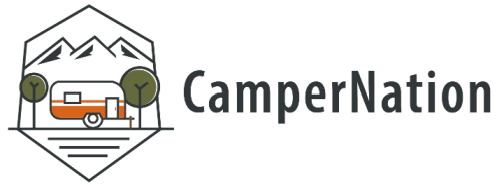What Are The 4 Types of Tents?
Lost in the tent aisle wondering if you're prepping for Everest or a kid's backyard sleepover? The 4 main tent types—dome, tunnel, ridge, and cabin—plus bonus glamping pods/tents make all the difference. We’ll help you pick your perfect shelter without accidentally glamping in a monsoon. Keep reading!
The Dome Tent: The Versatile All-Rounder
Key Features: Crossed-Pole Design and Good Headroom
Dome tents are popular for their weather resistance and simple setup. They use crossed poles that form a curved, dome-like shape.
These tents are often freestanding, so they don’t need to be staked initially. Most include colour-coded poles and clips for easier assembly. Headroom is moderate and well-distributed due to the shape.

Best For General Camping, Backpacking, and Small Groups
Dome tents are great for solo campers, backpackers, and small groups. They're light, compact, and easy to carry, making them ideal for hiking trips or weekends away.
Their efficient shape handles wind well, so they’re suitable for exposed locations too.
Main Pros and Cons
Pros:
-
Quick setup
-
Compact and easy to pack
-
Solid in windy conditions
Cons:
-
Interior space is limited compared to larger tents
-
Not ideal for snow unless reinforced
The Cabin Tent: Your Home Away from Home
Key Features: Near-Vertical Walls and Maximum Livable Space
Cabin tents are all about space and comfort. Their nearly vertical walls allow for maximum floor area and standing room.
Many cabin tents feature multiple rooms, big windows, and doors. They often include dividers, making them feel like a mini-home in the outdoors.
Best For Family Outings, Group Camping, and Car Camping
If you're camping with friends or family, this is a top pick. These tents are designed for group comfort, often used in car camping or long-term stays.
They're less portable but unbeatable for convenience.

Main Pros and Cons
Pros:
-
Plenty of room to move and stand
-
Feature-rich, often with storage and ventilation options
-
Great for extended stays
Cons:
-
Heavy and bulky
-
Longer to pitch
-
Less effective in high winds
The Tunnel Tent: Spacious and Weather-Resistant
Key Features: Hooped Poles and Excellent Space-to-Weight Ratio
Tunnel tents use a series of hooped poles to create an elongated, tunnel-like shape. This design makes them both roomy and stable.
Their shape also sheds wind effectively, provided they’re properly staked with guy lines. For the space offered, they remain reasonably light.
Best For Basecamps, Foul Weather, and Campers Needing Gear Storage
Tunnel tents suit those needing extra space for gear or movement. They’re popular for basecamps, family trips, and windy or rainy locations.
The additional space makes them great for longer adventures or messy weather.
Main Pros and Cons
Pros:
-
Very spacious interior
-
Stable in bad weather
-
Excellent ventilation
Cons:
-
Needs secure staking to stay upright
-
Less freestanding than dome tents
-
Slightly more involved setup
The A-Frame (or Ridge) Tent: The Classic Choice
Key Features: Simple Ridgeline Pole Construction
A-frame tents use a central ridgeline pole supported at both ends, forming the classic triangle look. It’s a trusted, minimalist design.
This style is light, easy to transport, and quick to pitch. It’s a great option for those who value simplicity.
Best For Solo Campers, Nostalgia, and Simple Setups
Ideal for solo trips or campers who enjoy a more traditional setup. Also a fun choice if you're feeling nostalgic for old-school camping.
It’s great in wind but not the most spacious.
Main Pros and Cons
Pros:
-
Lightweight
-
Fast to pitch
-
Handles wind well
Cons:
-
Less headroom than other tents
-
Not suitable for large groups
-
Fewer modern comforts

How to Choose the Right Tent Type for Your Adventure
Key Factors to Consider
Capacity vs. Livability (Number of People)
A tent might be rated for four people, but that doesn’t guarantee comfort. Think about the number of people and gear you’ll have.
Cabin tents offer better room for families. Dome and ridge tents may feel tight with multiple occupants.
Weather Conditions and Seasonality
Going out in rough weather? Pick a tent that’s up to the task.
Tunnel tents shine in windy or wet conditions. Dome tents are good all-rounders, while cabin tents are best in fair weather.
Ease of Setup and Portability
If you're moving camp regularly, opt for easy-to-pitch options like ridge or dome tents.
Family tents and glamping setups take more time and space but offer a luxury feel.
A Note on Other Tent Types (Backpacking, Rooftop, etc.)
Outside the core four, there are specialised options. These include backpacking tents, rooftop tents, and glamping pods.
Glamping tents offer hotel-like amenities in the wild, while ultralight shelters focus on mobility. Match the tent to your trip style.
Other content you might like:
- What Is A Glamping Tent
- What Is The Best Glamping Tent
- Where To Buy A Glamping Tent
- What Is The Difference Between Camping Tent And Glamping Tent?
- What Is The Difference Between A Cabin Tent And A Dome Tent?
- Which Tent Type Is The Most Popular And Widely Used?
- What Are The Disadvantages Of A Dome Tent?
- What Is A Viking Tent?
- Why Are Rooftop Tents Better?
- What Is Glamping Pod
- Why Is It Called Glamping?
- What Are Glamping Pods Made Of?






Leave a comment